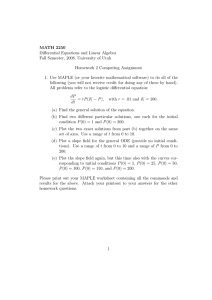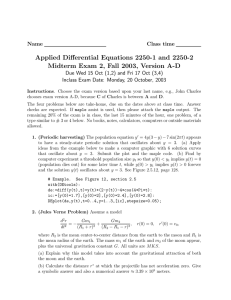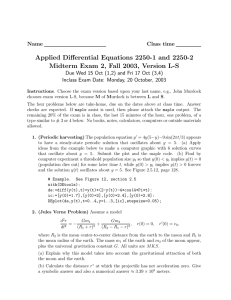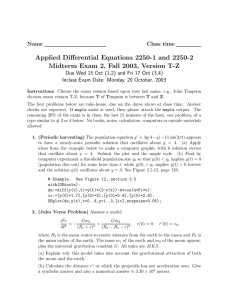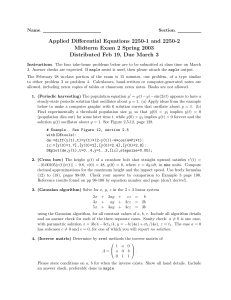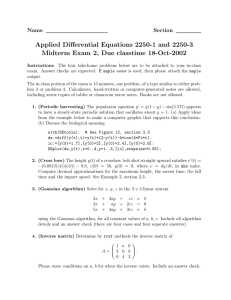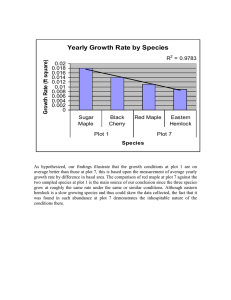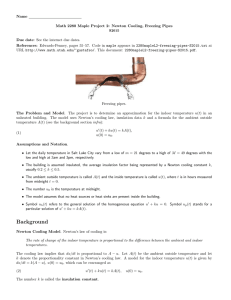MATH 1170 MATHEMATICS FOR LIFE SCIENTISTS Computer Assignment III Due September 16, 2003
advertisement
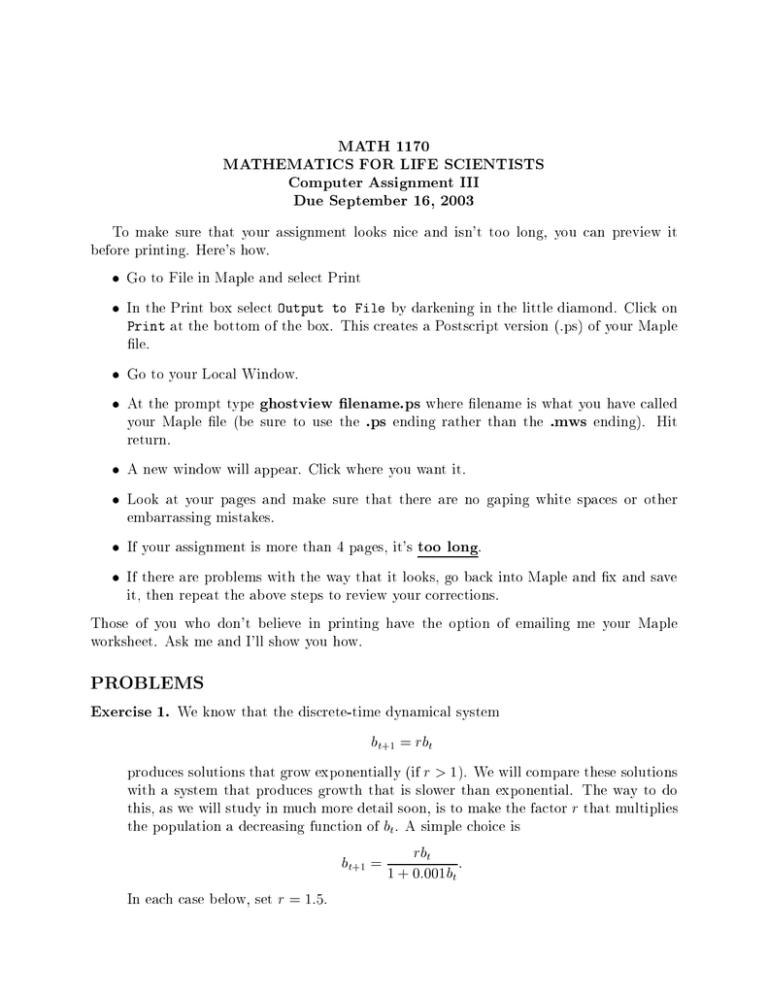
MATH 1170 MATHEMATICS FOR LIFE SCIENTISTS Computer Assignment III Due September 16, 2003 To make sure that your assignment looks nice and isn't too long, you can preview it before printing. Here's how. Go to File in Maple and select Print In the Print box select Output to File by darkening in the little diamond. Click on Print at the bottom of the box. This creates a Postscript version (.ps) of your Maple le. Go to your Local Window. At the prompt type ghostview lename.ps where lename is what you have called your Maple le (be sure to use the .ps ending rather than the .mws ending). Hit return. A new window will appear. Click where you want it. Look at your pages and make sure that there are no gaping white spaces or other embarrassing mistakes. If your assignment is more than 4 pages, it's too long. If there are problems with the way that it looks, go back into Maple and x and save it, then repeat the above steps to review your corrections. Those of you who don't believe in printing have the option of emailing me your Maple worksheet. Ask me and I'll show you how. PR OBLEMS Exercise 1. We know that the discrete-time dynamical system bt+1 = rbt produces solutions that grow exponentially (if r > 1). We will compare these solutions with a system that produces growth that is slower than exponential. The way to do this, as we will study in much more detail soon, is to make the factor r that multiplies the population a decreasing function of bt . A simple choice is bt+1 = In each case below, set r = 1:5. rbt 1 + 0:001bt : a. Dene updating functions for these two situations (give them dierent names) and plot them on the same graph for values of b between 0 and 1000. b. Use iterplot2 to plot the solutions of the two systems starting from the initial condition b0 = 1. When do the two solutions begin to look dierent? Exercise 2. Consider the following functions. f1 (x) = cos(x ? ) 2 cos(3x ? 2 ) f3 (x) = 3 cos(5x ? 2 ) f5 (x) = 5 cos(7x ? 2 ) f7 (x) = : 7 a. Find the amplitude, period and phase of each. b. Plot them together on one graph. c. Plot the sum f1(x) + f3(x) d. Plot the sum f1(x) + f3(x) + f5(x) e. Plot the sum f1(x) + f3(x) + f5(x) + f7(x). f. What does this sum look like? g. Try to guess the pattern. An innite number of terms is a Fourier series, a sum of cosine functions that add up to a square wave that jumps between values of -1 and 1. Exercise 3. Suppose that the amount of a drug in the body follows the updating function dt+1 = h(dt ) = 0:25dt + 3:0g: This means that the amount of drug decreases by 75% each day and is supplemented by 3:0g each day. a. Use Maple and the solve function to nd the inverse of h. The inverse is the function that eats dt+1 and spits out dt. Convince Maple to tell you the formula for the inverse. This is pretty tricky. Input this as a function with a command like > hinv := dnew -> some stuff; b. Find the values of dt+1 when dt = 2:0, dt = 4:0, and dt = 6:0. Use the inverse function on these values. Did they really come from the right place? c. Find the values of dt when dt+1 = 2:0, dt+1 = 4:0, and dt+1 = 6:0. Do your answers make sense? d. Plot h and its inverse on one graph. Mark the points you found in parts b and c on each line.
